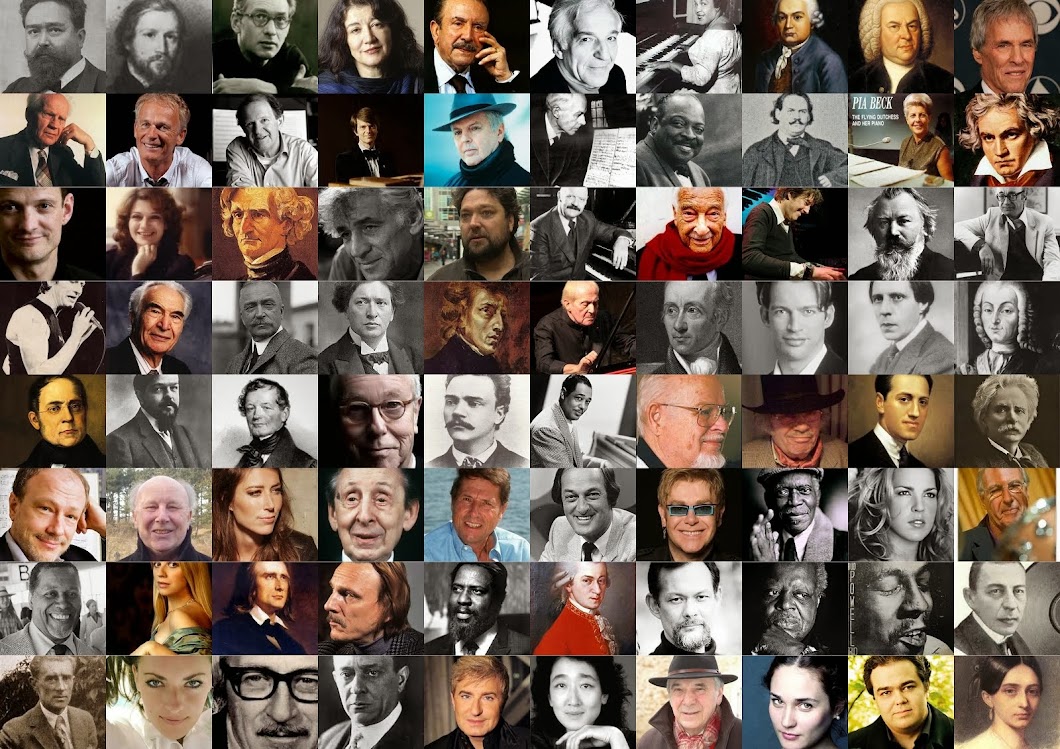Het vierde pedaal is een toepassing van pianofabrikant Fazioli:
FOURTH PEDAL
A new pedal has been created and patented by Fazioli to reduce the sound dynamic and allow playing pianissimo without any alteration of timbre. With the new pedal, the entire keyboard is moved closer to the strings. In this way, the hammers hit the strings with less force and produce a smaller sound without modifying the timbre and the hammer hits the strings in the same place. With the una Corda pedal the soft sound is obtained by moving the entire action to the right allowing the hammer to strike only two strings and thus producing a different timbre.
 Consequently with the keyboard shift and the reduction of the distance between the hammers and the strings, the depth of the keys reduces from 10 mm to 7 mm.
Consequently with the keyboard shift and the reduction of the distance between the hammers and the strings, the depth of the keys reduces from 10 mm to 7 mm.
In this way the following results are obtained:
Glissando become easier
Fast passages become easier
Better legato
A sound which is much longer and sustained (cantabile)
De vierde snaar is een toepassing van pianofabrikant Julius Blüthner:
The Patented Aliquot System http://www.bluethner.de/nl/indexfr.htm
Generations of piano makers have been constantly attempting to improve the quality of their instruments. Julius Blüthner made an important contribution with the development of the Aliquot System. Patented for the first time in 1872, it was one more step that provided Blüthner's well known warm and romantic sound.Currently, the Patented Aliquot System employs and additional fourth string in the treble section attached directly to the bridge that is not struck by the hammers (Figure 6).
the quality of their instruments. Julius Blüthner made an important contribution with the development of the Aliquot System. Patented for the first time in 1872, it was one more step that provided Blüthner's well known warm and romantic sound.Currently, the Patented Aliquot System employs and additional fourth string in the treble section attached directly to the bridge that is not struck by the hammers (Figure 6).
The fourth string is stimulated to vibrate through sympathetic resonance when the other three strings are struck, which results in an acoustical system enriching the overtone spectrum. It produces a very dynamic sound, which is audible over a wide range. This unique effect conveys the resonant treble of the Blüthner piano.
As an example, it is possible to experience this special effect with many of Beethoven's compositions giving an added dimension in tone colour and dynamics.
Another factor that is a great advantage is that all Blüthner strings are individually hitched.This allows for the Aliquot System to develop to its optimum as well as guaranteeing that the strings are tuned exactly. For optimum effect, precise tuning is essential. In today's instruments the 'aliquot strings' are tuned in unison with the trichords.
FOURTH PEDAL
A new pedal has been created and patented by Fazioli to reduce the sound dynamic and allow playing pianissimo without any alteration of timbre. With the new pedal, the entire keyboard is moved closer to the strings. In this way, the hammers hit the strings with less force and produce a smaller sound without modifying the timbre and the hammer hits the strings in the same place. With the una Corda pedal the soft sound is obtained by moving the entire action to the right allowing the hammer to strike only two strings and thus producing a different timbre.
 Consequently with the keyboard shift and the reduction of the distance between the hammers and the strings, the depth of the keys reduces from 10 mm to 7 mm.
Consequently with the keyboard shift and the reduction of the distance between the hammers and the strings, the depth of the keys reduces from 10 mm to 7 mm.In this way the following results are obtained:
Glissando become easier
Fast passages become easier
Better legato
A sound which is much longer and sustained (cantabile)
De vierde snaar is een toepassing van pianofabrikant Julius Blüthner:
The Patented Aliquot System http://www.bluethner.de/nl/indexfr.htm
Generations of piano makers have been constantly attempting to improve
 the quality of their instruments. Julius Blüthner made an important contribution with the development of the Aliquot System. Patented for the first time in 1872, it was one more step that provided Blüthner's well known warm and romantic sound.Currently, the Patented Aliquot System employs and additional fourth string in the treble section attached directly to the bridge that is not struck by the hammers (Figure 6).
the quality of their instruments. Julius Blüthner made an important contribution with the development of the Aliquot System. Patented for the first time in 1872, it was one more step that provided Blüthner's well known warm and romantic sound.Currently, the Patented Aliquot System employs and additional fourth string in the treble section attached directly to the bridge that is not struck by the hammers (Figure 6).The fourth string is stimulated to vibrate through sympathetic resonance when the other three strings are struck, which results in an acoustical system enriching the overtone spectrum. It produces a very dynamic sound, which is audible over a wide range. This unique effect conveys the resonant treble of the Blüthner piano.
As an example, it is possible to experience this special effect with many of Beethoven's compositions giving an added dimension in tone colour and dynamics.
Another factor that is a great advantage is that all Blüthner strings are individually hitched.This allows for the Aliquot System to develop to its optimum as well as guaranteeing that the strings are tuned exactly. For optimum effect, precise tuning is essential. In today's instruments the 'aliquot strings' are tuned in unison with the trichords.
